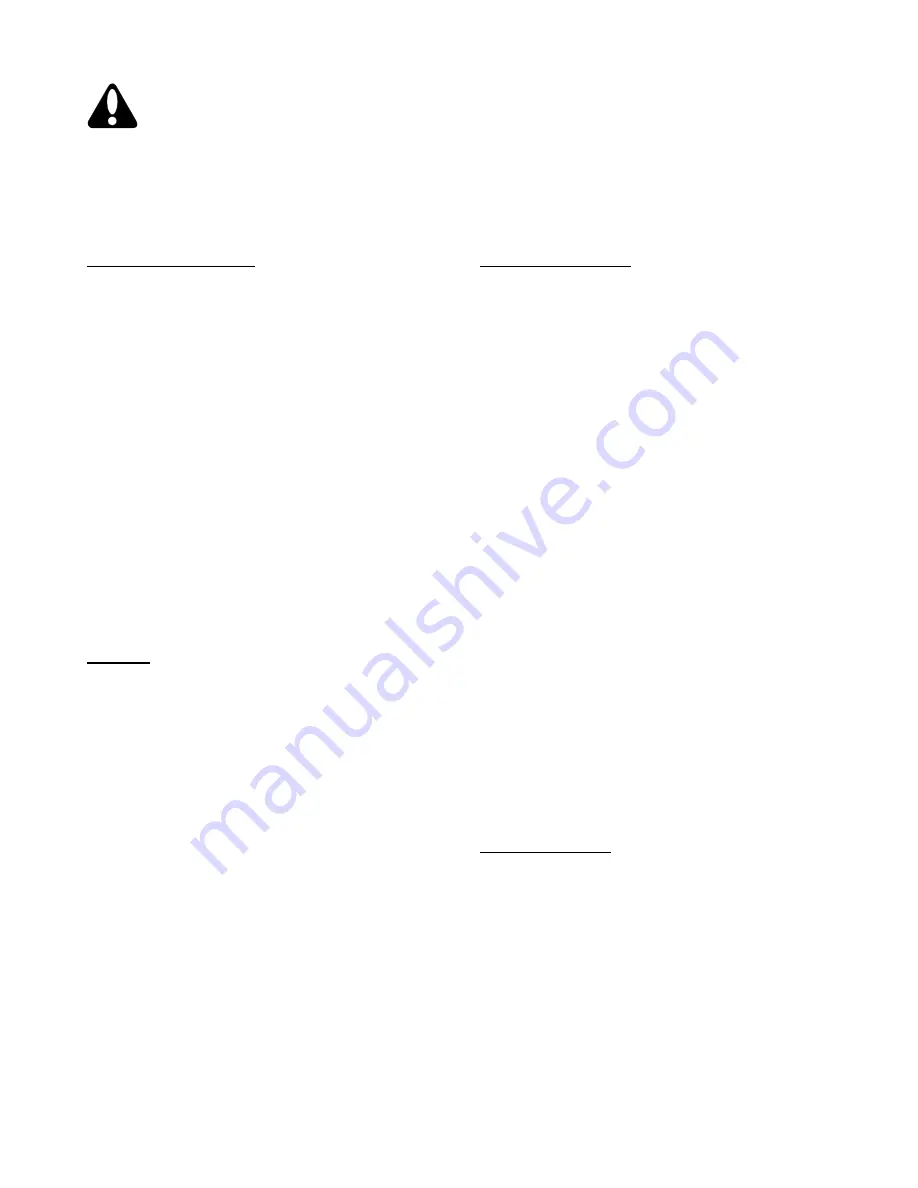
10
CHEMICAL SAFETY
DANGER:
Mishandling Agriculture chemicals can be deadly. Always follow the chemical manufacturer’s
instructions exactly. Minimize the risk of contaminating clothing, machinery, and the environment:
ensure you and other personnel are aware and follow the safe handling procedures described on the
pesticide label. DO NOT work alone. DO NOT allow children or unprotected workers on a contaminated
sprayer.
Transporting chemicals
1. Never transport pesticides in the passenger
space of an automobile. Never allow
passengers or pets to ride with the
pesticides.
2. Never leave pesticides unattended in an
unsecured vehicle.
3. Always transport containers in the original
container with the proper label attached.
Ensure the container is properly sealed and
the outside of the container is not
contaminated with pesticide.
4. Do not transport pesticides with fertilizer,
seed, feed, drugs, clothing, and food.
5. Secure the chemical containers to prevent
the load from shifting. Protect containers
from objects that could puncture, tear, or
ruin the packaging of the chemical.
6. If the pesticides are not to be used
immediately, transfer the containers to a
storage facility when you reach your
destination.
Handling
1.
Rinse containers immediately after
emptying. Thoroughly wash clothing and
equipment contaminated by chemicals. Do
not smoke or eat in the field while applying
pesticides.
2. Do not breathe, touch or ingest chemicals.
Always wear the protective clothing outlined
by the chemical manufacturers’ label and
follow safe handling procedures.
3. Fill the sprayer with chemical outside, in a
well-ventilated area, away from areas
frequently traveled by family and other
people.
4. Wash thoroughly before eating or using the
washroom. Use a detergent to remove all
chemical residue. Rinse carefully and dry
with disposable towels.
Pesticide Application
1. Read and follow all label instructions.
2. Select the least toxic pesticide for the
application. Chemicals that display
CAUTION or WARNING on the label are less
harmful than chemicals that display
DANGER on the label. Avoid using
chemicals that are designated RESTRICTED
if possible.
3. Wear the appropriate protective clothing and
equipment when working with chemicals.
Remove protective clothing and equipment
before entering the cab to prevent
contaminating the cab.
4. If possible, DO NOT leave the operator’s cab
while in the treated area. If it becomes
necessary to leave the cab in the treated
area, immediately put on the protective
clothing and equipment required by the
pesticide label upon exiting the cab.
5. Misuse, including excessive rates, uneven
application, wind drift, and label violations
can cause injury to crops, livestock, persons
and the environment.
6. Eliminate the need to dispose of excess
pesticides by purchasing only what is
required to do the application.
7. Ensure there is fresh water in the fresh water
wash tank; know where it is and how to use
it. Consult a physician should you contact
the chemical and subsequently experience
physical difficulties. Do not use the sprayer
to transport drinking water.
Storing Chemicals
1. Follow the manufacturers’ instructions for
chemical storage. Avoid unnecessary
storage by purchasing only the quantity
needed for the crop year. Never reuse
pesticide containers.
2.
Store chemicals only in their original
containers and in a locked area. Never use
unmarked containers or containers used for
food to store pesticides.
3. Keep all chemicals out of reach of children
and away from livestock and animals.












































